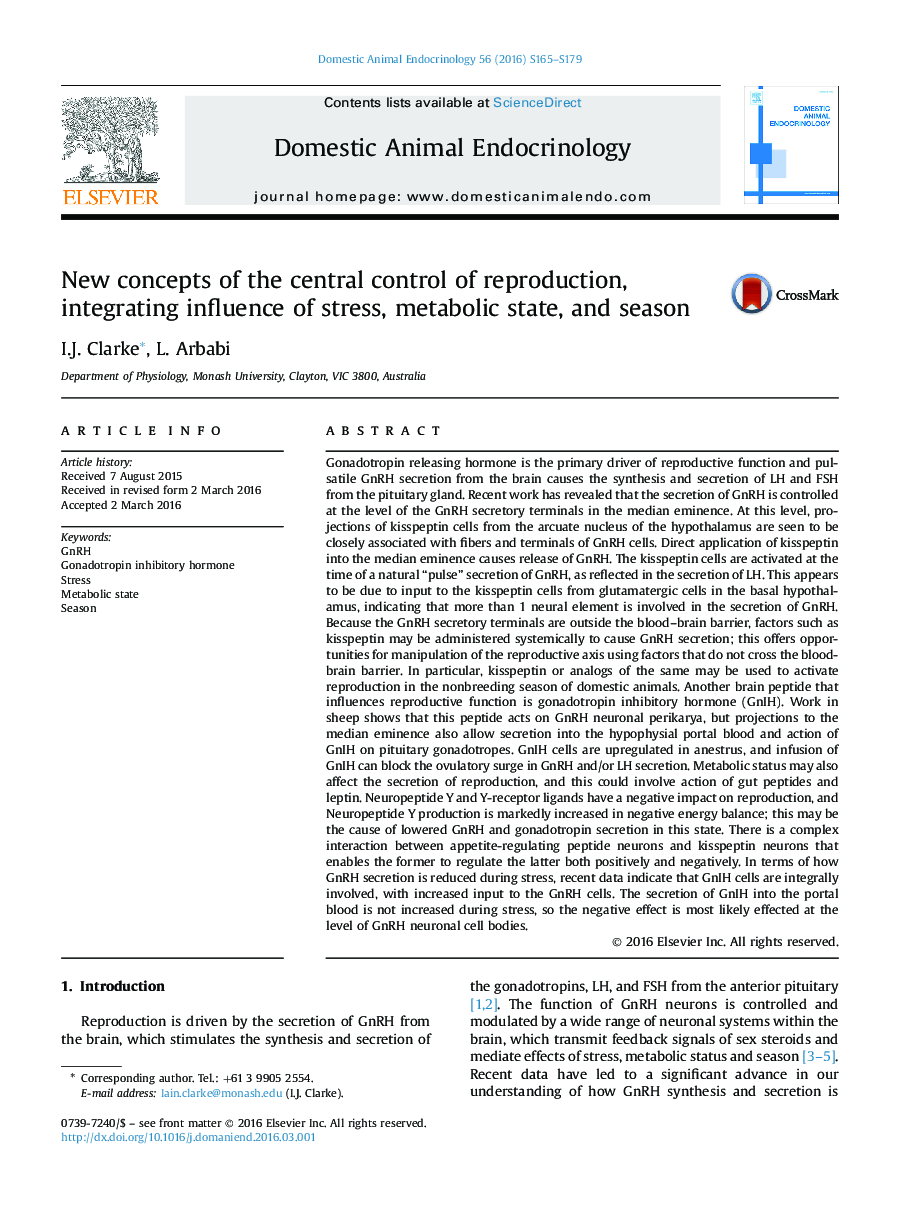| کد مقاله | کد نشریه | سال انتشار | مقاله انگلیسی | نسخه تمام متن |
|---|---|---|---|---|
| 10961154 | 1101316 | 2016 | 15 صفحه PDF | دانلود رایگان |
عنوان انگلیسی مقاله ISI
New concepts of the central control of reproduction, integrating influence of stress, metabolic state, and season
ترجمه فارسی عنوان
مفاهیم جدید کنترل مرکزی تکثیر، ادغام تأثیر استرس، وضعیت متابولیک و فصل
دانلود مقاله + سفارش ترجمه
دانلود مقاله ISI انگلیسی
رایگان برای ایرانیان
کلمات کلیدی
موضوعات مرتبط
علوم زیستی و بیوفناوری
علوم کشاورزی و بیولوژیک
علوم دامی و جانورشناسی
چکیده انگلیسی
Gonadotropin releasing hormone is the primary driver of reproductive function and pulsatile GnRH secretion from the brain causes the synthesis and secretion of LH and FSH from the pituitary gland. Recent work has revealed that the secretion of GnRH is controlled at the level of the GnRH secretory terminals in the median eminence. At this level, projections of kisspeptin cells from the arcuate nucleus of the hypothalamus are seen to be closely associated with fibers and terminals of GnRH cells. Direct application of kisspeptin into the median eminence causes release of GnRH. The kisspeptin cells are activated at the time of a natural “pulse” secretion of GnRH, as reflected in the secretion of LH. This appears to be due to input to the kisspeptin cells from glutamatergic cells in the basal hypothalamus, indicating that more than 1 neural element is involved in the secretion of GnRH. Because the GnRH secretory terminals are outside the blood-brain barrier, factors such as kisspeptin may be administered systemically to cause GnRH secretion; this offers opportunities for manipulation of the reproductive axis using factors that do not cross the blood-brain barrier. In particular, kisspeptin or analogs of the same may be used to activate reproduction in the nonbreeding season of domestic animals. Another brain peptide that influences reproductive function is gonadotropin inhibitory hormone (GnIH). Work in sheep shows that this peptide acts on GnRH neuronal perikarya, but projections to the median eminence also allow secretion into the hypophysial portal blood and action of GnIH on pituitary gonadotropes. GnIH cells are upregulated in anestrus, and infusion of GnIH can block the ovulatory surge in GnRH and/or LH secretion. Metabolic status may also affect the secretion of reproduction, and this could involve action of gut peptides and leptin. Neuropeptide Y and Y-receptor ligands have a negative impact on reproduction, and Neuropeptide Y production is markedly increased in negative energy balance; this may be the cause of lowered GnRH and gonadotropin secretion in this state. There is a complex interaction between appetite-regulating peptide neurons and kisspeptin neurons that enables the former to regulate the latter both positively and negatively. In terms of how GnRH secretion is reduced during stress, recent data indicate that GnIH cells are integrally involved, with increased input to the GnRH cells. The secretion of GnIH into the portal blood is not increased during stress, so the negative effect is most likely effected at the level of GnRH neuronal cell bodies.
ناشر
Database: Elsevier - ScienceDirect (ساینس دایرکت)
Journal: Domestic Animal Endocrinology - Volume 56, Supplement, July 2016, Pages S165-S179
Journal: Domestic Animal Endocrinology - Volume 56, Supplement, July 2016, Pages S165-S179
نویسندگان
I.J. Clarke, L. Arbabi,
